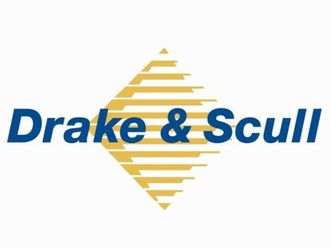Dubai: Progress on Dubai's Palm islands has been hitting the headlines for the right and wrong reasons this week.
Developer Nakheel has put back full handover of residential properties on the Palm Jumeirah until next summer, while construction work on the Palm Deira has started after months of reclamation and sand filling.
But lying on the fringes of the Abu Dhabi border, the distinct shape of the colossal Palm Jebel Ali (the middle-sized of the three palms) has emerged from the ocean floor.
Reclamation is now 98 per cent complete and the island's 20 km breakwater has been fully formed.
The overall land mass is 40 per cent bigger than the Palm Jumeirah at approximately ten square kilometres, with wider spaces between each frond of the palm. Its coastline is 70km long 10 km more than the entire natural coast of Dubai from the Sharjah to Abu Dhabi border.
Barren
Just four years ago, the site was a barren stretch of coast line close to the sprawling Jebel Ali port, one of the few remaining areas which could accommodate the project.
Once the island's shape and design were chosen, ten million tonnes of rock and 175 million cubic metres of ocean sand were dumped onto the sea bed, with scuba divers checking that every layer of rock was placed correctly.
"The quantity and quality of rocks was one of the major challenges during reclamation phase," said Ali Mansour, project director for the Palm Jebel Ali.
Engineers built four openings to the open sea, each 250 metres wide, to ensure water flushing and circulation, a problem which affected the Palm Jumeirah.
Officials at Dubai Waterfront, the company managing the project, say vibro-compacting of the island's reclaimed materials is now underway and is expected to last 18 months. The method puts the placed material under enormous pressure and prepares the soil to levels which allow building work to start.
The company would not reveal the exact construction timeline, saying building work could be affected by low supply of labour and materials and logistic problems, but said construction is currently three months ahead of schedule.
The Palm Jumeirah was hit by rumours over land subsidence, but Matt Joyce, managing director of Dubai Waterfront Company, claims the foundation for the Palm Jebel Ali is better than non-reclaimed land.
"Eight metres of water has 11-12 tonnes of weight, which compresses the ocean floor. We're building on top of what is the best possible foundation material," he said.
Another concern from engineers was Dubai's proximity to earthquake zones in Iran.
"We are using the building code provided by Dubai Municipality, so buildings will be designed to withstand anything up to 5.5 on the richter scale," said Mansour.
When complete, Palm Jebel Ali will house a population of up to 250,000 roughly equivalent to Dubai's entire population in the early 1980s.
The island will feature hotels, leisure facilities, a business district, schools and hospitals, approximately 2,000 villas and 1,300 waterhouses accessible via wooden jetties at the tip of each frond.
The housing density on the fronds will be the same as on the Palm Jumeirah.
The island will be connected to the mainland by three bridges, with plans to divert traffic to other access points should a major accident block one bridge.
One Arabic Proverb will be fixed in the basin on each side of the island, built on a scale large enough to be readable from space.
Breakwater cross section
Paradise island home for 250,000 people
- Reclamation is 98 per cent complete.
- When complete, the island will house up to 250,000 people.
- At its peak, reclamation work reached one million cubic metres of material every four days.
- Work on constructing the island's breakwater progressed at an average of 35 linear metres of completed section per day.
- Overall length of the beachline is 70km more than the natural coastline of Dubai from Sharjah to Abu Dhabi border.
- The buildings will be built to withstand an earthquake of up to 5.5 on the richter scale.












